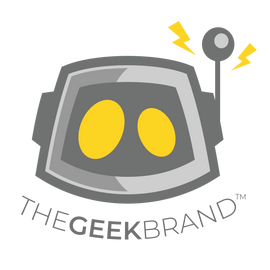From Silicon Valley Startups to Sustainable Legos: The Intersection of Tech, Toys, and the Environment
In the sprawling metropolis of Silicon Valley, where startups sprout like mushrooms after rain, one might be surprised to find a connection between programming, databases, UX/UI, and…Legos? Yet, in this era of burgeoning artificial intelligence and ever-evolving technology, the ties binding these seemingly disparate entities have never been more significant. For those not in the know, Legos are the colorful plastic building blocks that have been a staple in playrooms across the globe for decades. While these toys may seem far removed from the world of work and productivity, the connection between the two becomes clear when we consider the creative, algorithm-driven process of building with Legos - a process not unlike that experienced by software developers. In fact, many software developers have even likened programming to playing with Legos. Both require a problem-solving mindset, attention to detail, and the ability to envision a final product from a collection of individual parts. In a Wired software review, one developer noted, "When I'm coding, it's like I'm constructing a Lego masterpiece. Each line of code is a brick that contributes to the overall structure." In the same vein, databases and UX/UI design - two crucial aspects of the tech industry - share a similar Lego-esque nature. Databases, like Lego structures, are built from a series of interconnected blocks of information. UX/UI design, on the other hand, mirrors the user-centric approach that Lego has always embraced, designing toys that are intuitive and enjoyable for the player. But what does Google have to do with all this? Well, Google's search algorithms are the unseen hand that guides our internet journey, much like an invisible Lego master builder. Moreover, Google's recent antitrust issues tie in with the broader theme of power dynamics and market control, a topic as relevant to the tech industry as it is to the toy industry. Artificial intelligence is another field where the intersection of tech and toys becomes apparent. OpenAI's GPT-3, for example, can generate human-like text based on a given input. This kind of AI could revolutionize the way we interact with toys, possibly leading to Lego sets that can provide real-time, AI-generated instructions based on the user's building process. However, this tech-toy fusion isn't all fun and games. As we become increasingly aware of our environmental footprint, the sustainability of our actions - and our toys - is more important than ever. Lego, for example, has committed to making all its products from sustainable materials by 2030, reflecting a broader trend towards environmental responsibility in both the tech and toy industries. In conclusion, from the software developers in Silicon Valley startups, to the search algorithms of Google, to the plastic bricks of Lego, these worlds are far more intertwined than they may appear. Whether it's through the common thread of creativity, the shared principles of design, or the mutual challenge of sustainability, the world of tech and the world of toys are building a shared future, one block at a time.




















